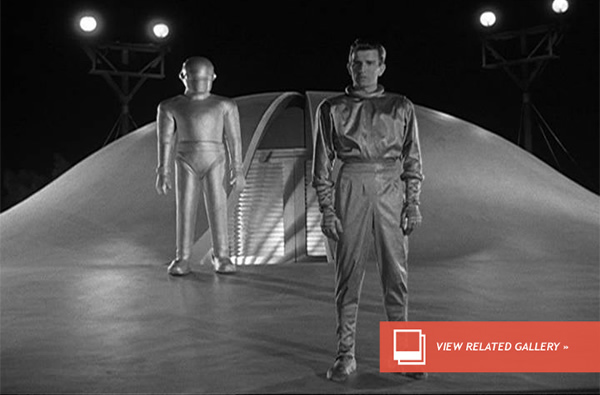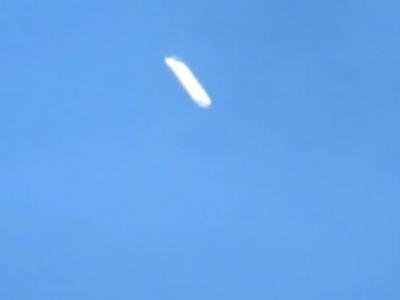UFOs Flunk Believability Test for Alien Contact
The scientific search for life off Earth goes back at least 100 years; when electrical wizard Nikola Telsa thought that his “Magnifying Transmitter” had detected radio signals from Martians.
Telsa would have never imagined that a century later we’d have robots on Mars looking for microbes, or have the ability to detect laser or radio transmissions from distant stars. What would he have thought about the purported evidence for flying saucers?
The search for extraterrestrial life is so multipronged today we have to ask ourselves what sort of detection of life off Earth would be most scientifically reliable? And, what scenario would have the biggest impact on the public?
Hungarian astronomer Ivan Almár and SETI veteran Jill Tarter explored this question over a decade ago. They proposed the Rio Scale for ranking both the importance and credibility of claims that E.T. has been found.
The scale runs from 0 to 10 and is much simpler than the legendary Drake Equation for estimating the abundance of active alien civilizations. The Rio Scale has just two multiplicative factors: the importance of the discovery and an estimate of its credibility. You can do your own calculation by using the Rio Scale Calculator.
UFOs Flunk Believability Test for Alien Contact
The Rio Scale was revisited in the January 2011 Philosophical Transactions of the Royal Society. They looked into “The Detection of Extraterrestrial Life and the Consequences for Science and Society.” Almár, with astrobiologist Margaret Race, introduced the London Scale. The variables were expanded to: how exotic are the life forms (1, simple to 6, exotic); the nature of the evidence (1 poor, to 5, robust); the type of method of discovery (1, weak, to 5, robust); distance of the life form from Earth (1, far away to 4, near Earth). The sum of these variables is then multiplied by the scientific reliability quotient (0 -.5).
For example, the authors applied this metric to the infamous Allan Hills Mars meteorite that is thought to contain evidence of past Martian microbial activity. They computed 2+2+4+4 x 0.3 = 3.6, out of a peak value of 10.
I’m going to take this scale a step further and assess a “PR” value. How much attention did it get around the world? My multiplier is from 0 to 10, with a potential top value of 100.
I give the Mars meteorite a PR value of 7 because there was lots of news coverage and President Bill Clinton made a formal statement that reasserted the nation’s support for space exploration, even in light of budget cuts. My “Mr. Spock” score for the meteorite public impact is 12.6 out of 100.
The only other experiment that may have detected Martians was carried out aboard the Viking 1 and Viking 2 landers in 1976. The robust experiments yielded a seemingly positive result per the rules set forth by their builders. But were they asking the right question given huge uncertainties over the Martian environment? The curious data — apparently metabolic reactions without the presence of carbon compounds — threw astrobiologists into a new “phase space.” This required follow-up experiments that could not be done in-situ. News coverage was diffused by the confusion and uncertainty over interpreting the seemingly contradictory data. My score is 1.8, (1+2+2+4 x0.2 x 2).
A more promising route would be the successful sample return of Mars microbes to an Earth high-quarantine laboratory. On Earth, numerous rigorous experiments could be done to determine if the sample is unequivocally living. Once you see life squirming under a microscope all ambiguity is gone. The public would be both scared and enthralled at the thought of an alien organism locked up inside an Earth lab. But they could not really see it or interact with it. (Just burn all copies of Michael Crichton’s 1969 novel, The Andromeda Strain). This hits 85 in my estimate (2+6+5+4 x 0.5 x 10).
A year after the Viking landings, on Aug. 15, 1977, a strong, brief burst of radio energy was received at the Big Ear radio telescope at the Ohio State University. The minute-long signal was narrowband, meaning that all of its energy was focused in a small part of the electromagnetic spectrum. It had the trademark of what would be expected from an artificially produced alien broadcast. But the so-called “WOW signal” has yet to reappear. It remains a SETI ghost story that continues being retold, but has never made big news. My score: 2.4 (5+2+4+1 x 0.2 x 1).
The long-dreamt of scenario of a SETI beacon that repeats itself and may even have substantive information content (as dramatized in Carl Sagan’s 1985 novel Contact) would be bolstered presumably by observations from multiple facilities. The signal would likely come from thousands of light-years away. No doubt the U.S. president would make a similar Clintoneqsue speech, something like “the question of whether or not we are alone on he universe has been answered.” (From the 1996 alien attack film Independence Day.) But public interest would be mitigated by the reality the signal can from so long ago and so far, far away. Score: 85 (5+6+5+1 x 0.5 x 10).
We might someday stumble upon large-scale alien astroengineering through routine deep space surveys. This would be reminiscent of the brief uncertainly as to whether pulsar signals first detected in the late 1960s were actually artificial in origin. What’s more, a passive alien SETI could use artificial orbiting bodies that would transit a star in an unusual way, say in polar orbits. If two of the extraordinarily large satellites were space exactly 180 degrees apart, astronomers would be perplexed by the space ballet. So the news would be confounding at best. The result would be debated from a long time and this would undermine credibility. Score: 29.4 (5+4+4+1 x 0.3 x 7).
My prediction is that the SETI detection that would knock it out of the ballpark would be the discovery of an alien artifact in our solar system: something presumably left behind by a far-advanced intelligence (as dramatized in the 1968 Stanley Kubrick and Arthur C, Clarke classic film, 2001 A Space Odyssey). The best chances for finding an artifact may be buried in the super-high resolution images of the moon from NASA’s Lunar Reconnaissance Orbiter. The moon is a 4-billion year old landfill. Such a discovery would trigger a new space race as the U.S. and China scrambled to send humans to the moon to retrieve the artifact. Detailed tests on Earth would establish the reality of an extraterrestrial “watchmaker.” This hits 90, in my opinion. (5+6+5+4 x 0.5 x 9).
The other end of the scale bottoms out at UFOs being piloted alien spaceships. The most widely publicized UFO ghost story is the alleged crash of a flying saucer near Roswell, New Mexico in 1947. There are stories of autopsies on the alien crew and debris with hieroglyphic-type writing. This was nothing more that the crash of an Air Force balloon that has been embellished by tall-tales over the decades. As typical of a pseudoscience, believers cry government cover-up over the whole affair. In reality, the more UFOs that are reported, the less likely they are extraterrestrials, because a piece of one should have crashed though somebody’s attic by now, says SETI astronomer Seth Shostak. This flatlines at a big fat “0” as do all other alleged UFO visitations (5+1+1+4 x 0 x 10).
This would change dramatically if a flying saucer landed at the White House as depicted in the 1950 film classic, The Day the Earth Stood Still. Given the age of the galaxy; I’d say this should have happened by now.
But if it ever did, bingo! A perfect 100!(Apr 30, 2013 11:57 AM ET // by Ray Villard)












